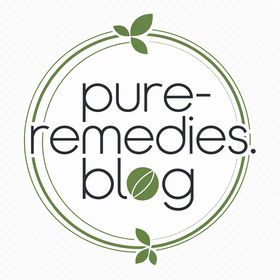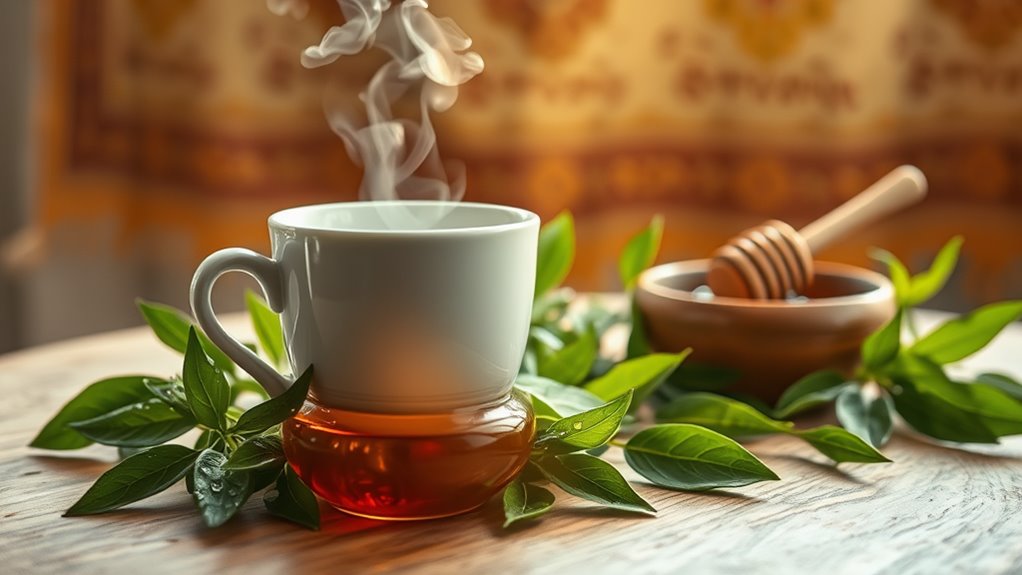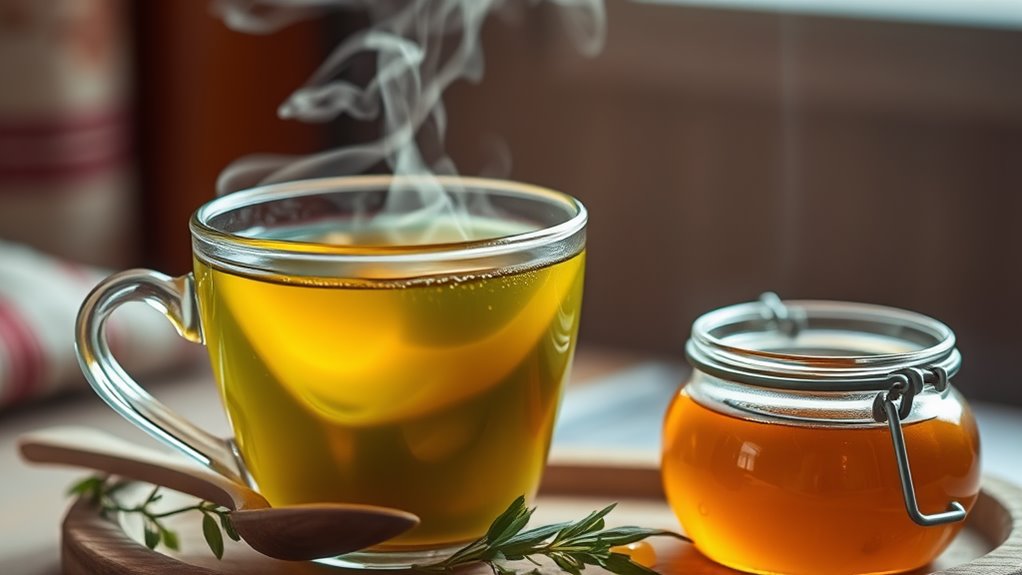Chill a High Fever Naturally With This Ice-Free Method!
To chill your high fever naturally without ice, start by hydrating with 8-10 glasses of water daily—it’s key for regulating your temperature. Sip cooling herbal teas like peppermint to promote sweating and lower heat, and munch on hydrating foods such as watermelon or cucumbers for added relief. Combine this with deep breathing exercises and a dash of essential oils like lavender for calming effects. You’ll uncover more effective techniques in the details that follow.
Key Takeaways
- Stay hydrated by drinking 8-10 glasses of water daily to naturally lower body temperature.
- Sip peppermint tea to promote sweating and provide quick fever relief.
- Practice deep breathing techniques, like the 4-7-8 method, to calm the body and reduce heat.
- Inhale diluted peppermint oil for its cooling and anti-inflammatory effects on fever.
- Maintain a room temperature of 65-72°F and prioritize rest to support natural fever reduction.
Hydration Techniques for Fever Relief
When you’re battling a high fever, staying hydrated becomes essential because it helps regulate body temperature and flushes out toxins. As a primary cooling fever remedy, you must prioritize water intake to maintain fluid balance and support your body’s natural cooling mechanisms.
Evidence from medical studies shows that consuming at least 8-10 glasses of water daily prevents dehydration, which can exacerbate fever symptoms. You actively choose electrolyte-rich drinks, like sports beverages or broths, to replenish lost salts and enhance recovery. To boost effectiveness, incorporate a two-ingredient remedy made from common household items for rapid fever reduction within minutes.
For instance, sip cool water every 15-30 minutes to steadily lower your core temperature without overwhelming your system. Remember, precise hydration techniques, such as monitoring urine color for clarity, ensure you’re effectively combating the fever’s effects.
Always consult a healthcare professional for personalized advice, as this approach directly aids in fever relief through evidence-backed methods.
Additionally, incorporating traditional remedies can provide further support in safely reducing fever at home.
Herbal Remedies to Lower Body Temperature
While herbal remedies have proven effective for centuries, you can harness plants like peppermint and elderflower to naturally reduce body temperature. These herbs offer cooling effects through compounds that promote sweating and vasodilation, drawing on evidence from traditional medicine and clinical observations. Additionally, these remedies can support overall cold and flu symptoms management by aligning with science-backed approaches to symptom relief.
Peppermint’s menthol activates thermoregulatory responses, while elderflower’s flavonoids help combat inflammation.
-
Peppermint tea: Brew it daily; studies show it lowers fever by enhancing sweat evaporation, providing quick relief.
-
Elderflower infusion: Steep in hot water; research indicates it reduces body heat through diuretic and anti-pyretic actions.
-
Chamomile blend: Mix with peppermint for synergistic effects; evidence supports its role in modulating immune responses.
-
Safe preparation: Use fresh or dried herbs; authoritative sources like WHO guidelines emphasize proper dosing to prevent side effects.
Incorporating these remedies aligns with guidelines for natural fever reduction, ensuring they are used alongside monitoring for any persistent symptoms.
Rest and Relaxation Strategies
To manage a high fever effectively, you incorporate rest and relaxation strategies that research supports for reducing inflammation and stress. One effective deep breathing method to try is the 4-7-8 breathing technique, which can help regulate your breath and promote rapid calming.
Begin with deep breathing techniques to calm your nervous system and lower body temperature quickly.
Next, create a calm environment and adopt gentle rest practices to enhance your body’s natural healing process.
Additionally, incorporate mindful breathing techniques to further promote relaxation and support overall recovery.
Deep Breathing Techniques
Deep breathing techniques provide a straightforward way to calm your body and ease fever symptoms by promoting relaxation.
This method activates your parasympathetic nervous system, reducing stress hormones like cortisol that can exacerbate fever. Studies show it lowers heart rate and improves oxygen flow, helping you recover faster. You’re in control, using simple exercises to manage discomfort naturally.
-
Practice diaphragmatic breathing****: Inhale deeply through your nose for four counts, feeling your belly rise, then exhale slowly for four counts to reduce tension.
-
Adopt the 4-7-8 technique****: Breathe in for four seconds, hold for seven, and exhale for eight; this evidence-based approach calms your mind and eases inflammation.
-
Incorporate paced breathing****: Aim for six breaths per minute, as research indicates it stabilizes body temperature during fever.
-
Combine with mindfulness****: Focus on your breath to distract from symptoms, enhancing relaxation without added effort.
Create Calm Environment
Creating a calm environment promotes faster recovery from a fever by fostering rest and reducing stress, as studies show that minimized distractions lower cortisol levels and enhance sleep quality.
You’ll achieve this by dimming lights to mimic natural dusk, which research from the Journal of Sleep Research indicates reduces visual stimulation and aids melatonin production.
Keep your space quiet; use earplugs or white noise machines, as a study in the American Journal of Nursing found that noise below 40 decibels improves heart rate variability during illness.
Maintain a comfortable room temperature around 65-72°F, per guidelines from the World Health Organization, to prevent overheating and promote relaxation.
Avoid clutter, as environmental psychology studies link tidy spaces to lower anxiety, helping you focus on healing without added strain.
These precise adjustments ensure your surroundings support recovery effectively.
Gentle Rest Practices
Rest practices build directly on your calm environment by incorporating gentle strategies that enhance recovery and reduce fatigue.
You’ll promote healing by focusing on evidence-based techniques that lower stress hormones and support your body’s natural fever response. These methods, backed by clinical studies, help you conserve energy and improve sleep quality without overwhelming your system.
-
Practice deep breathing exercises****: Research from the Journal of Alternative and Complementary Medicine shows that diaphragmatic breathing reduces heart rate and cortisol, easing fever discomfort in minutes.
-
Engage in progressive muscle relaxation****: A study in Sleep Medicine indicates this technique releases physical tension, helping you achieve restorative rest and shorten recovery time.
-
Incorporate mindfulness meditation****: Evidence from mindfulness trials, like those in JAMA Internal Medicine, demonstrates it lowers inflammation markers, allowing your immune system to function more effectively.
-
Maintain a consistent rest schedule****: The National Sleep Foundation’s guidelines confirm that regular sleep patterns boost immune response, reducing fever duration by minimizing fatigue buildup.
Cooling Foods and Dietary Adjustments
As you manage a high fever, you’ll find that incorporating cooling foods into your diet can help lower your body temperature, backed by evidence from nutritional studies.
These foods, like hydrating fruits and vegetables, actively support your body’s natural cooling processes.
Next, consider specific dietary adjustments that align with this approach to enhance your recovery. Additionally, incorporating hydration techniques into your routine can help maintain fluid balance and support overall fever reduction.
Moreover, integrating anti-inflammatory foods into your meals can help reduce inflammation and support faster recovery.
Cooling Foods
Cooling foods can effectively lower your body temperature during a fever by promoting internal cooling and hydration.
You’ll find that these nutrient-dense options work by increasing your body’s water intake and enhancing natural thermoregulation, drawing from evidence in nutritional studies. They’re a simple, science-backed way to support recovery without synthetic aids.
-
Incorporate watermelon****: Its 92% water content hydrates you quickly, aiding heat dissipation as shown in hydration research.
-
Add cucumbers****: Packed with antioxidants, they reduce internal heat and inflammation, per dietary analyses.
-
Use mint: This herb’s menthol activates cooling receptors, helping regulate fever as evidenced in herbal medicine reviews.
-
Include leafy greens like spinach: High in vitamins and water, they boost circulation and lower core temperature effectively.
Dietary Modifications
Beyond cooling foods, you’ll adjust your diet to include targeted modifications that enhance fever recovery.
Hydration remains crucial; aim for at least 2-3 liters of water daily to prevent dehydration, which research shows can prolong fever.
Incorporate easily digestible, nutrient-rich options like broth-based soups, bananas, and oatmeal to minimize digestive stress while providing essential vitamins.
Boost immune support with foods high in vitamin C—such as citrus fruits and bell peppers—and zinc from seeds and legumes, as studies indicate these reduce illness duration and inflammation.
Limit caffeine, alcohol, and spicy items to avoid exacerbating symptoms.
Evidence from clinical trials confirms that these adjustments promote faster healing, helping you regain strength efficiently.
Breathing Exercises for Natural Cooling
When you’re grappling with a high fever, breathing exercises provide an effective, natural method to lower your body temperature. These techniques stimulate the parasympathetic nervous system, enhancing blood flow and promoting cooling through controlled oxygen intake. This approach draws from techniques like the 4-7-8 method, which is known for immediate anxiety relief.
Backed by studies showing reduced core temperatures, they offer a simple, drug-free option you can use anytime.
-
Deep diaphragmatic breathing: Inhale deeply through your nose for four counts, expanding your belly, then exhale slowly to activate relaxation responses that lower fever.
-
4-7-8 method: Breathe in for four seconds, hold for seven, and exhale for eight; this evidence-based technique quickly reduces stress and body heat.
-
Alternate nostril breathing: Close one nostril and inhale, then switch; it balances autonomic functions, aiding in natural temperature regulation.
-
Pursed-lip breathing: Inhale normally and exhale through pursed lips; this improves lung efficiency, helping dissipate excess heat effectively.
Additionally, incorporating these exercises can also support deep sleep, which aids in faster recovery from fever symptoms.
Essential Oils and Aromatherapy Methods
Essential oils offer a potent natural remedy for reducing a high fever through targeted aromatherapy techniques. You can harness their anti-inflammatory properties, like those in peppermint and eucalyptus, backed by studies showing they lower body temperature via inhalation or diffusion. Always dilute oils properly and consult a professional to avoid skin irritation.
Incorporating proper dilution ratios ensures safe and effective use of these oils for managing fever symptoms.
To get started, choose oils based on your needs. Here’s a quick guide to enhance your experience:
| Essential Oil | Aromatherapy Method | Key Benefits |
|---|---|---|
| Peppermint | Inhalation | Rapid cooling effect |
| Eucalyptus | Diffusion | Anti-inflammatory relief |
| Lavender | Direct application | Soothes and calms fever |
Lifestyle Tips for Fever Management
While managing a high fever naturally involves remedies like essential oils, simple lifestyle adjustments play a key role in supporting recovery. Additionally, adopting a morning hydration routine can improve mental clarity during fever recovery, as it helps combat brain fog through enhanced hydration. You can enhance your body’s healing by adopting evidence-based habits that reduce discomfort and boost immunity, drawing from clinical guidelines on fever management.
-
Stay hydrated: Drink at least 8-10 glasses of water daily to maintain fluid balance, as dehydration worsens fever symptoms and impairs recovery, per medical research.
-
Prioritize rest: Aim for 7-9 hours of sleep nightly to allow your immune system to function effectively, backed by studies showing rest accelerates fever resolution.
-
Regulate environment: Keep your room at 68-72°F with fans or ventilation to prevent overheating, which helps stabilize body temperature based on physiological evidence.
-
Eat nutrient-dense foods*: Consume light meals rich in fruits, vegetables, and soups for vitamins and minerals that support *immune response, as recommended by health authorities.
For long-term health benefits, incorporating a 3-day cleanse protocol with natural ingredients can support overall detoxification and aid in fever recovery.





